Aβ plaques do not protect against HSV-1 infection in a mouse model of familial Alzheimer's disease, and HSV-1 does not induce Aβ pathology in a model of late onset Alzheimer's disease
- PMID: 36064300
- PMCID: PMC9836376
- DOI: 10.1111/bpa.13116
Aβ plaques do not protect against HSV-1 infection in a mouse model of familial Alzheimer's disease, and HSV-1 does not induce Aβ pathology in a model of late onset Alzheimer's disease
Abstract
The possibility that the etiology of late onset Alzheimer's disease is linked to viral infections of the CNS has been actively debated in recent years. According to the antiviral protection hypothesis, viral pathogens trigger aggregation of Aβ peptides that are produced as a defense mechanism in response to infection to entrap and neutralize pathogens. To test the causative relationship between viral infection and Aβ aggregation, the current study examined whether Aβ plaques protect the mouse brain against Herpes Simplex Virus 1 (HSV-1) infection introduced via a physiological route and whether HSV-1 infection triggers formation of Aβ plaques in a mouse model of late-onset AD that does not develop Aβ pathology spontaneously. In aged 5XFAD mice infected via eye scarification, high density of Aβ aggregates did not improve survival time or rate when compared with wild type controls. In 5XFADs, viral replication sites were found in brain areas with a high density of extracellular Aβ deposits, however, no association between HSV-1 and Aβ aggregates could be found. To test whether HSV-1 triggers Aβ aggregation in a mouse model that lacks spontaneous Aβ pathology, 13-month-old hAβ/APOE4/Trem2*R47H mice were infected with HSV-1 via eye scarification with the McKrae HSV-1 strain, intracranial inoculation with McKrae, intracranial inoculation after priming with LPS for 6 weeks, or intracranial inoculation with high doses of McKrae or 17syn + strains that represent different degrees of neurovirulence. No signs of Aβ aggregation were found in any of the experimental groups. Instead, extensive infiltration of peripheral leukocytes was observed during the acute stage of HSV-1 infection, and phagocytic activity of myeloid cells was identified as the primary defense mechanism against HSV-1. The current results argue against a direct causative relationship between HSV-1 infection and Aβ pathology.
Keywords: 5XFAD mice; Alzheimer's disease; Aβ aggregates; amyloid precursor protein; hAβ/APOE4/Trem2*R47H mice; herpes simplex virus 1; infiltrating myeloid cells; microglia.
© 2022 The Authors. Brain Pathology published by John Wiley & Sons Ltd on behalf of International Society of Neuropathology.
Conflict of interest statement
The authors declare no conflict of interests.
Figures

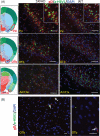




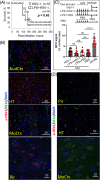
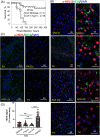

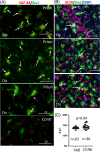
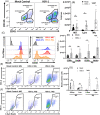
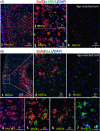
Similar articles
-
Alzheimer's disease-associated β-amyloid does not protect against herpes simplex virus 1 infection in the mouse brain.J Biol Chem. 2021 Jul;297(1):100845. doi: 10.1016/j.jbc.2021.100845. Epub 2021 May 28. J Biol Chem. 2021. PMID: 34052228 Free PMC article.
-
Herpes Simplex Virus 1 Infection Does Not Increase Amyloid-β Pathology in APP/PS1 Mice.J Alzheimers Dis. 2024;97(1):171-178. doi: 10.3233/JAD-230746. J Alzheimers Dis. 2024. PMID: 38143354
-
Amyloid-β and p-Tau Anti-Threat Response to Herpes Simplex Virus 1 Infection in Primary Adult Murine Hippocampal Neurons.J Virol. 2020 Apr 16;94(9):e01874-19. doi: 10.1128/JVI.01874-19. Print 2020 Apr 16. J Virol. 2020. PMID: 32075924 Free PMC article.
-
Anti-Viral Properties of Amyloid-β Peptides.J Alzheimers Dis. 2016 Oct 4;54(3):859-878. doi: 10.3233/JAD-160517. J Alzheimers Dis. 2016. PMID: 27392871 Review.
-
Herpes Simplex Virus Type 1 and Other Pathogens are Key Causative Factors in Sporadic Alzheimer's Disease.J Alzheimers Dis. 2015;48(2):319-53. doi: 10.3233/JAD-142853. J Alzheimers Dis. 2015. PMID: 26401998 Free PMC article. Review.
Cited by
-
Herpes simplex virus-1 infection alters microtubule-associated protein Tau splicing and promotes Tau pathology in neural models of Alzheimer's disease.Brain Pathol. 2025 Sep;35(5):e70006. doi: 10.1111/bpa.70006. Epub 2025 Mar 26. Brain Pathol. 2025. PMID: 40143446 Free PMC article.
-
Small Animal Models to Study Herpes Simplex Virus Infections.Viruses. 2024 Jun 27;16(7):1037. doi: 10.3390/v16071037. Viruses. 2024. PMID: 39066200 Free PMC article. Review.
-
Neurotropic virus infection and neurodegenerative diseases: Potential roles of autophagy pathway.CNS Neurosci Ther. 2024 Jun;30(6):e14548. doi: 10.1111/cns.14548. Epub 2023 Dec 11. CNS Neurosci Ther. 2024. PMID: 38082503 Free PMC article. Review.
-
Skin-brain axis in Alzheimer's disease - Pathologic, diagnostic, and therapeutic implications: A Hypothetical Review.Aging Dis. 2024 Apr 6;16(2):901-916. doi: 10.14336/AD.2024.0406. Aging Dis. 2024. PMID: 38739932 Free PMC article. Review.
-
Viral Infections, Are They a Trigger and Risk Factor of Alzheimer's Disease?Pathogens. 2024 Mar 8;13(3):240. doi: 10.3390/pathogens13030240. Pathogens. 2024. PMID: 38535583 Free PMC article. Review.
References
-
- Glenner GG, Wong CW. Alzheimer's disease: initial report of the purification and characterization of a novel cerebrovascular amyloid protein. Biochem Biophys Res Commun. 1984;120:885–90. - PubMed
-
- Goate A, Chartier‐Harlin MC, Mullan M, Brown J, Crawford F, Fidani L, et al. Segregation of a missense mutation in the amyloid precursor protein gene with familial Alzheimer's disease. Nature. 1991;349:704–6. - PubMed
-
- Hardy JA, Higgins GA. Alzheimer's disease: the amyloid cascade hypothesis. Science. 1992;256(5054):184–5. - PubMed
-
- Itzhaki RF, Wozniak MA, Appelt DM, Balin BJ. Infiltration of the brain by pathogens causes Alzheimer's disease. Neurobiol Aging. 2004;25(5):619–27. - PubMed
Publication types
MeSH terms
Substances
Grants and funding
LinkOut - more resources
Full Text Sources
Medical
Molecular Biology Databases

